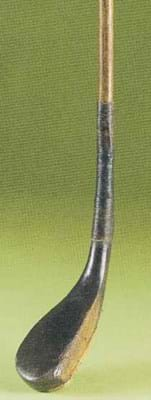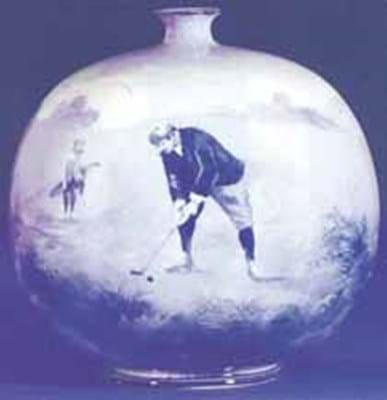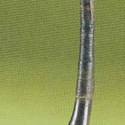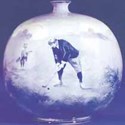Indeed, in the golf world, there exists a wistful yearning for the heady days of the 1980s and early '90s when big American and Japanese buyers were helped to sustain lofty market conditions. These were the times when feather balls could command five figures, whereas auctioneers now have to settle for four, and hickory shaft irons could fetch £100 each, unlike the £100 for a whole set that now seems standard.
However, although the golfiana market has been in the comparative doldrums for a number of years now, sales can still produce viable returns for auctioneers so long as the items are sensibly priced.
Christie's 328-lot sale included 152 lots from the property of an American vendor which, thanks to the moderate reserves, did very well. All but 11 found buyers, with most going for under £500. This not only shows that bargains are there to be had, but it also helped bump up the sale total to a healthy 79 per cent sold by lot, with Christie's netting a premium-inclusive total of £135,280.
The highest price seen in the sale was for a putter belonging to Allan Robertson, the man often regarded as the first great golfing professional. This scared-head long-nosed club with the stamp of Hugh Philp, the 'Stradivarius' of golf-club manufacturing, was sold at a lower estimate £20,000 to a US private commission bidder. The club, dated c.1835, was given by Robertson, probably as a gift, to the fellow pioneering golfer Ben Sayers.
One of the paintings bought by a UK private commission bidder was a Henry Clifford watercolour which went well above its £1500-2000 estimate. The £3200 paid for Golfers, Brora was a record for the artist at auction. The 1898 work depicted Brora Golf Course, a links perched on the coastline of Scottish Highlands. It measured 6 3/4 x 9 1/4in (17 x 24cm) and had the inscription on the reverse Blathers & Havers canne ye hear what I say. The course would have been only seven years old at the time of Clifford's painting, well before it was completely redesigned by four-times Open champion James Braid in 1923.
Like Royal Troon on the other side of the Scottish coast, Brora provides a panorama of seascape and the surrounding landscape.
However, unlike recent events at Troon, the painting embodies a time when a generation of Scottish golfers, rather than unexpected Americans, dominated the British Open.
Chipping out of the rough
COINCIDING with the run up to the British Open at Royal Troon, Christie’s South Kensington (19.5/12% buyer’s premium) held their summer sale of golf memorabilia on July 8. According to the specialist in charge, David Convery, the auction was “well attended by British based and American buyers,” but, nevertheless, there was still something of a polite hush around the saleroom with most lots barely scraping past their reserves.








